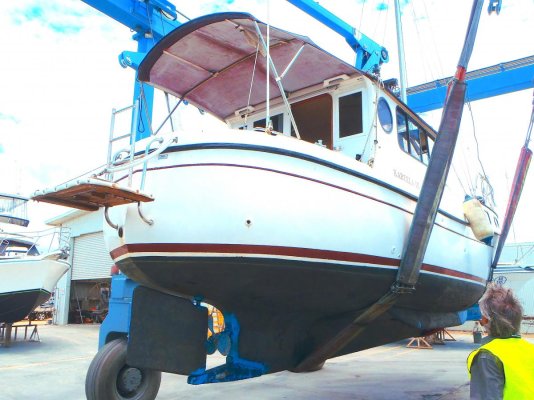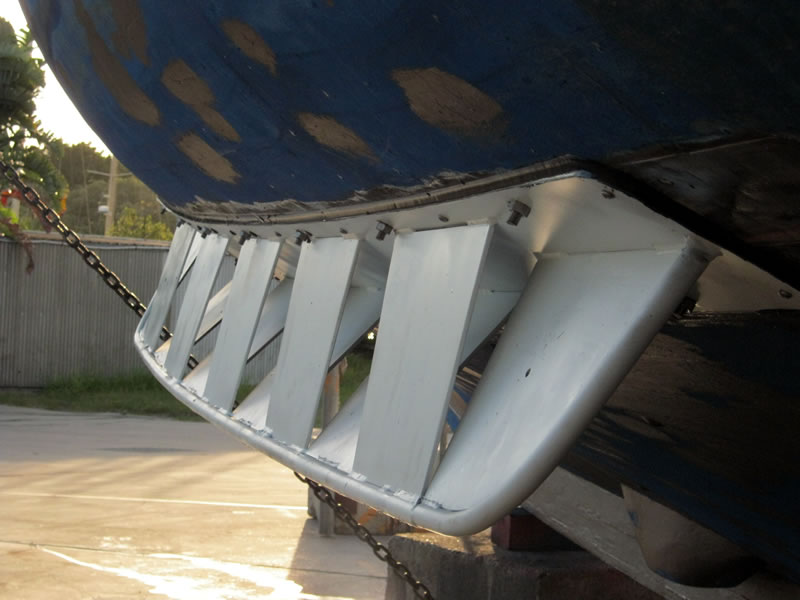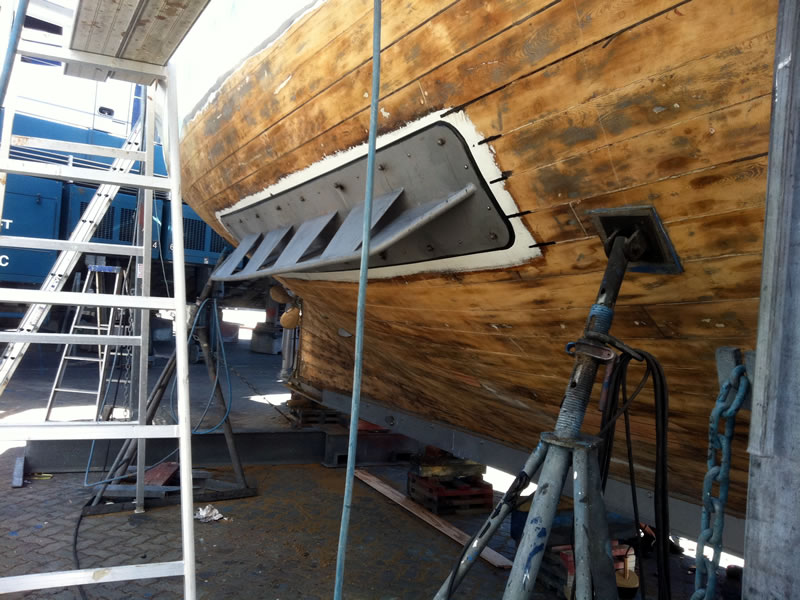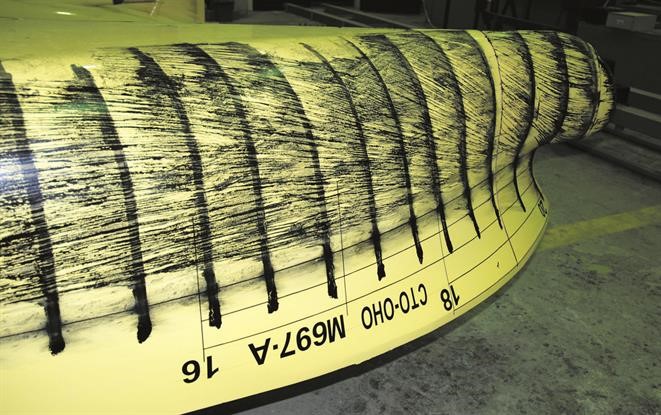"Rolling chock" is a plate-like hull appendage just below the waterline on small-scaled fishing boat (less than 20 GT), and is expected to play a role of damping effect on the rolling motion by fishermen and shipyard engineers with their empirical knowledge. It was assumed that the resistance produced by the rolling chock in the rolling motion is a main factor of the damping effect. Few studies have however been done on damping effect of the rolling chock. This study confirmed the damping effect of the roling chock in the tank tests by using a model ship of Lpp 1.92m with rolling chock of three different widths (0.01, 0.02, and 0.04m) and without. In this study, the damping effect is assumed to be evaluated by the wave-making component of ship resistance. The damping of the rolling motion measured in free roll tests was modeled with the single-degree-of-freedom rolling equation, and then the extinction coefficients were determined by Froude's energy method. On the coefficients, wave-making component b_<F1> of the model ship equipped with rolling-chock was larger than that without rolling chock, and increased similar to the extinction coefficient as the rolling chock became wider. In contrast, no particular relationship of vortex-making component b_<b2> to rolling chock width was found. The maximum resonance amplitude was clearly reduced with equipping the rolling chock in rolling tests in beam waves of three wave slopes (1/10, 1/20, and 1/30). Linear model substituted into damping moment term of the single-degree-of-freedom rolling equation was valid to express the maximum resonance amplitude of the model ship with and without rolling chock.




